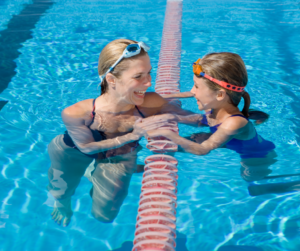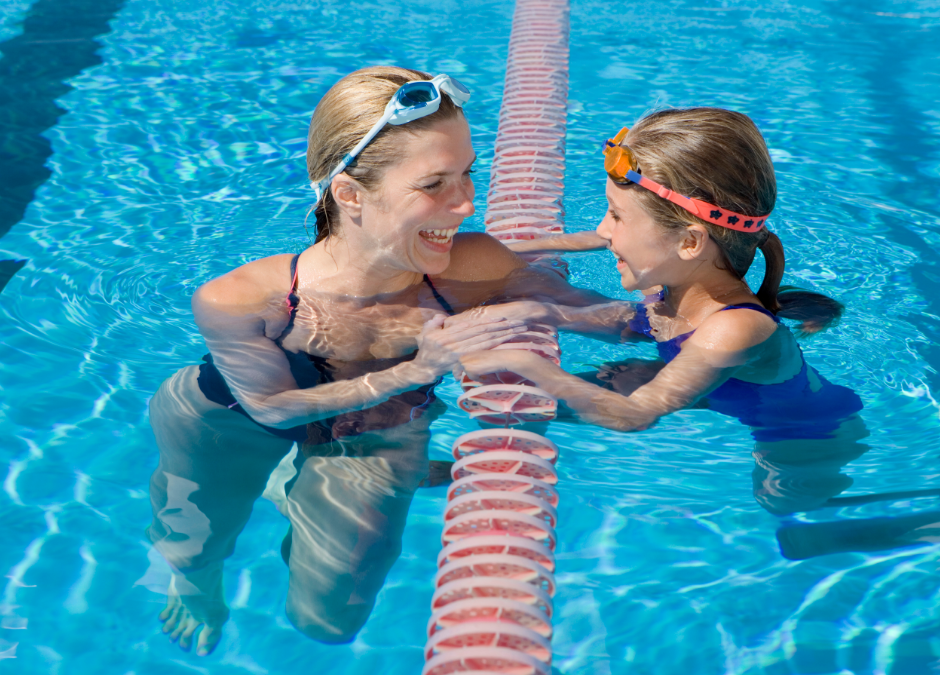It’s a scorching hot summer day and your little one is begging you for a trip to the local pool. You throw on a swimsuit, pack up the swim towels and sunscreen and hop in the car. On the way, the pit in your stomach grows bigger and bigger.
Here’s the thing:
Maybe you hate the pool.
Maybe you never learned to swim.
Maybe you’re afraid of the water.
Maybe you had a traumatic experience as a child.
Maybe you feel self conscious.
No matter the reason why swimming makes you nervous, you are not alone. More than ⅓ of adults can’t swim the length of a pool – putting them at risk of drowning. The good news is, even if YOU struggle in the water, you can still make sure your child learns to swim. In fact, with drowning a leading cause of accidental death in young children, it’s critical you give your child the opportunity to feel comfortable and secure in the water.
Here are a few tips to help you as you navigate the pool with your child:
- Consider taking an adult swim class. Did you know many places offer adult swim lessons for beginners? Check out your local rec department or swim schools and see if you can sign up for a few lessons. Beyond helping your confidence, you will be able to share some of the swim tips you learn with your little one.
- Be Positive. It’s easy to pass your fears onto your kids. They pick up on your tone of voice, your body language and tend to get to participate in the same activities you enjoy. Treat swim lessons the same way you treat any other life skill – from reading, counting, ABC’s, crossing the street or eating a healthy meal – it’s critical and should be a priority.
- Do some Research. Maybe you talk with their swim instructor to pick up some tips on how to teach them at the pool. Maybe you read some articles or watch some videos about teaching basic swim skills. Whatever you choose, find a way to help your child learn the basics – like blowing bubbles, sticking their “eyes” in the water, rolling over onto their back and how to climb out of the pool.
- Play! Make the water a “fun” space – for your child AND for you! Stay in the shallow end and blow bubbles together, or sing songs as you splash. Find a way to connect with your child in the pool and give them a chance to form positive associations with the water.
- Do Start Small. Don’t jump into the deep end if you’re not comfortable under water. Don’t expect to learn to swim laps overnight. Don’t try to catch your child off the diving board right away. It’s important to learn the basics and move at your own pace.

No matter how you feel about swimming, it’s definitely possible to help your child learn to swim. Even if you never get in the water yourself, you can make sure your child learns from a swim instructor and you can make sure they have the tools they need to stay safer in the water. For more information about learning to swim as an adult, check out these resources: https://www.usms.org/alts-central/alts-initiatives

